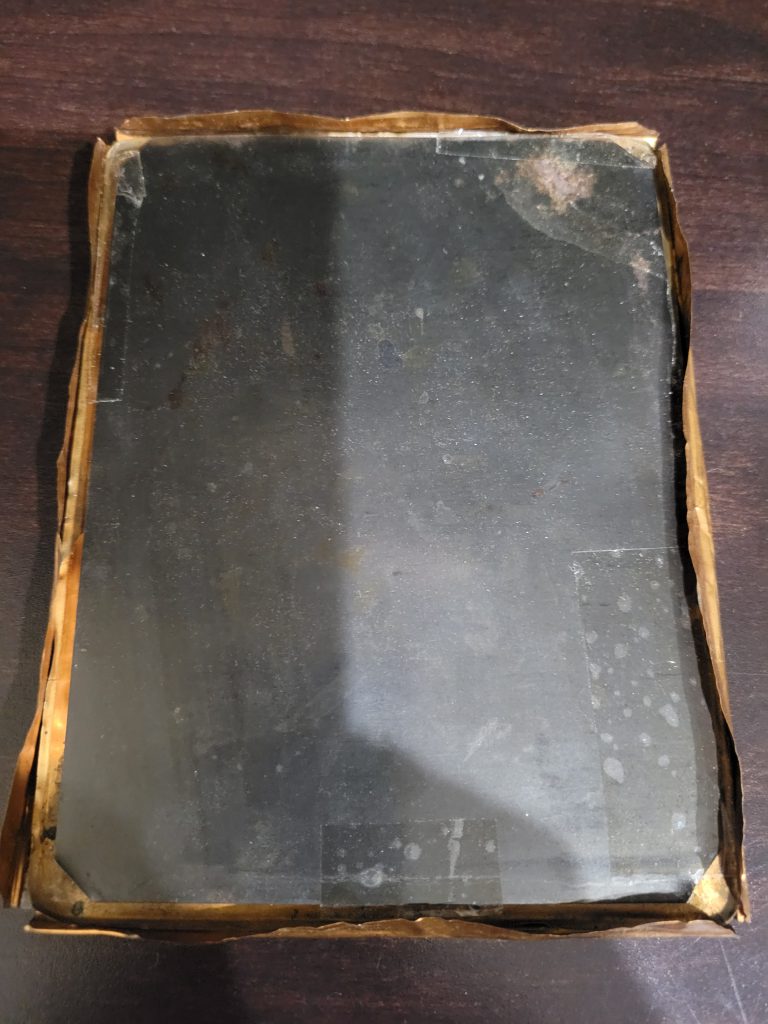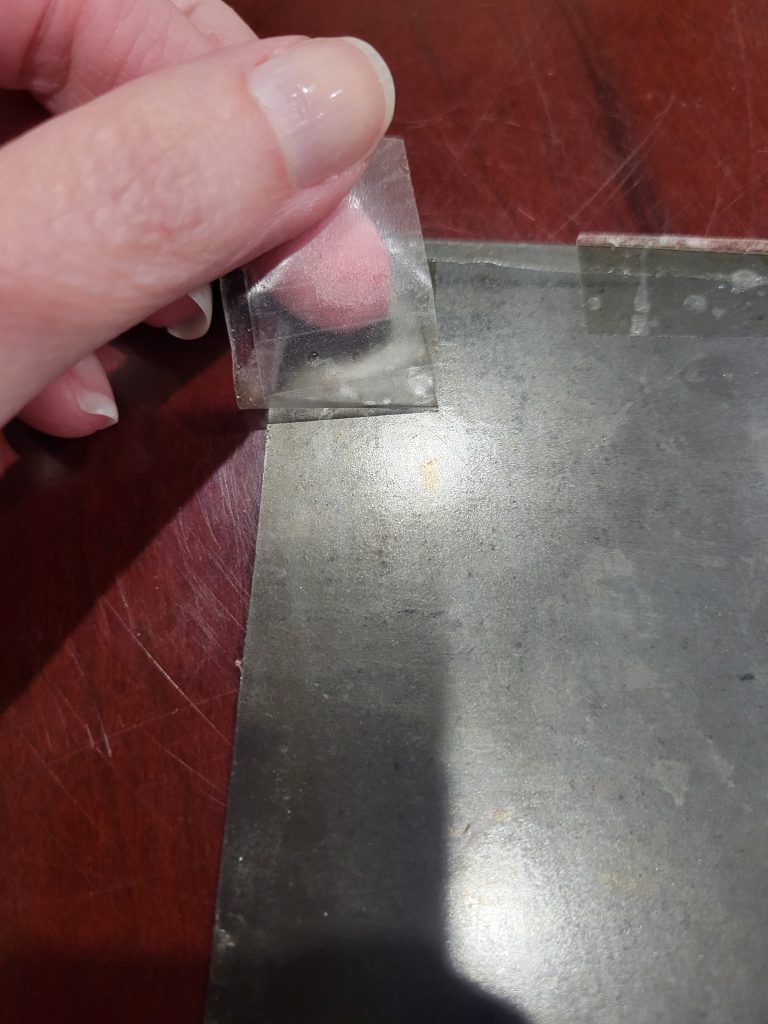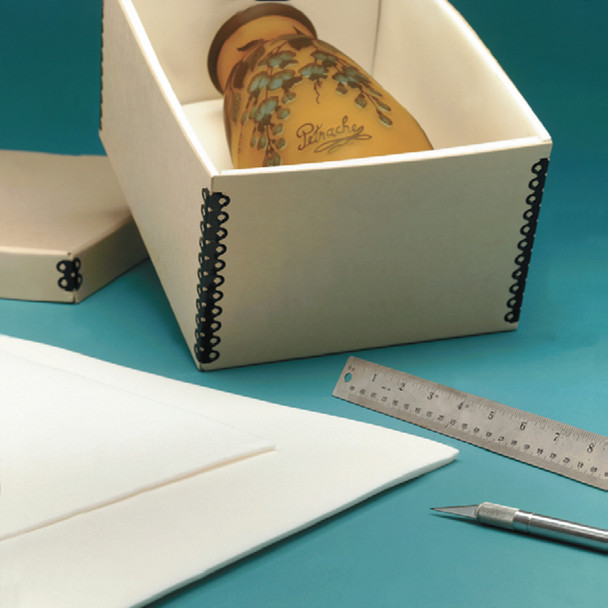Angry Archivist: Taping a Tintype
In my last “Angry Archivist” post I complained about someone who traced over an original Civil War letter with ballpoint pen and taped it, and today I’m extending that complaint to folks who tape historic photographs–specifically, taping a tintype.

Just this week, while processing a new batch of photographs to add to the Research Arsenal database, I was horrified to find an extremely valuable tintype taped into its frame. Now, I understand whoever did this was probable trying to prevent it from sliding inside the copper frame, but tape is not the answer, my friend.
Not only was this tape, it was PACKING tape. This stuff is great for mailing boxes, and other uses where it is not designed to be removed without leaving a trace. It is not designed to be used to secure artifacts to frames. I guess I should be glad it wasn’t duct tape—it could have been worse!

Luckily, I was able to peel off the tape by going very slowly and only had to deal with gummy tape residue in a couple spots. The residue rubbed off gently without the need for additional methods likely indicating that the tape was applied recently. Typically, the older the packing tape, the more gooey it is when you try to remove it. And it’s sad that I know that because that means I’ve removed more packing tape from artifacts than I’d like to admit.
When I first posted about cataloging your collection and the different ways to number your items, the first rule I hammered home was to make sure that whatever you are doing with your items is reversible—don’t write on them when Sharpies, cut them, thumbtack them, etc. Applying packing tape to them is one of those things that can cause permanent damage.
Using Polyethylene Foam Instead
Now, I understand that collectors like to display their tintypes and sometimes the images are loose in their frames. I’m not just going to beat folks up for doing the wrong thing without offering a solution. If you are having this problem, I recommend investing in some Ethafoam or Volara foam.

Ethafoam (or Volara) is a closed-cell polyethylene foam that is inert, waterproof, fantastic for cushioning, and comes in a variety of thicknesses. You can buy a block of it and carve it to cushion a large 3D artifact, or you can buy it in sheets, which is what you’d want to do in this case.
Using a thin sheet of polyethylene foam (about ¼ inch thick) cut it into a small strip to fit between the folding edge of the copper frame and the tintype itself. This will essentially give the tintype a little extra thickness to ensure that the frame can hold it in place. The foam will not damage the tintype in any way, in fact, it will prevent any scratches from the copper onto the back of the image.
An important thing to note is that you MUST make sure that the polyethylene foam is inert and appropriate for long-term storage. There are a number of low-cost polyethylene foam options available online, but they are for packing and shipping, not archival use. Look for brands like Ethafoam or Volara and check the item descriptions to ensure that they are safe for long-term use.
If you have fragile artifacts, you can use this foam to line their storage boxes for extra protection. You can use it to line the display shelves that your artifacts sit on, and you can use it to cushion between artifacts in boxes. It is a very useful collections care item to have on hand.
In a pinch, if you do not have foam or are unable to purchase some, I would recommend using archival tissue to do the same thing. You may need to fold some tissue several times on itself to make it thick enough, but this will also work and will not cause any damage to the image or leave any sticky tape residue.
As much as I don’t like to find these archival faux pas in my work, I am happy to take the opportunity to provide a little education and hopefully stop a future incident happening. Remember, in the world of archives, packing tape, duct tape, or scotch tape is never an option! It may be tempting as an easy fix, but it’s never a good choice!

